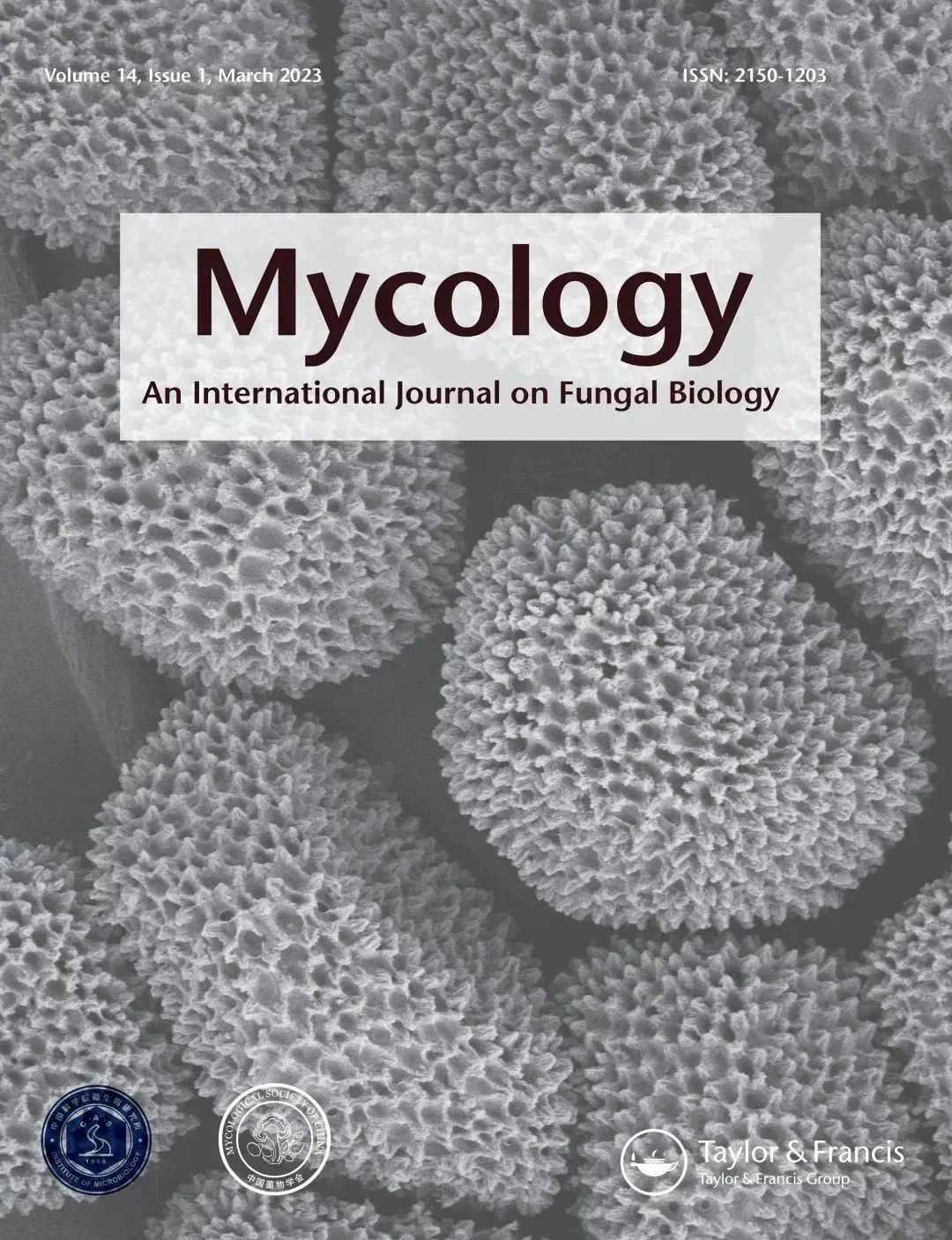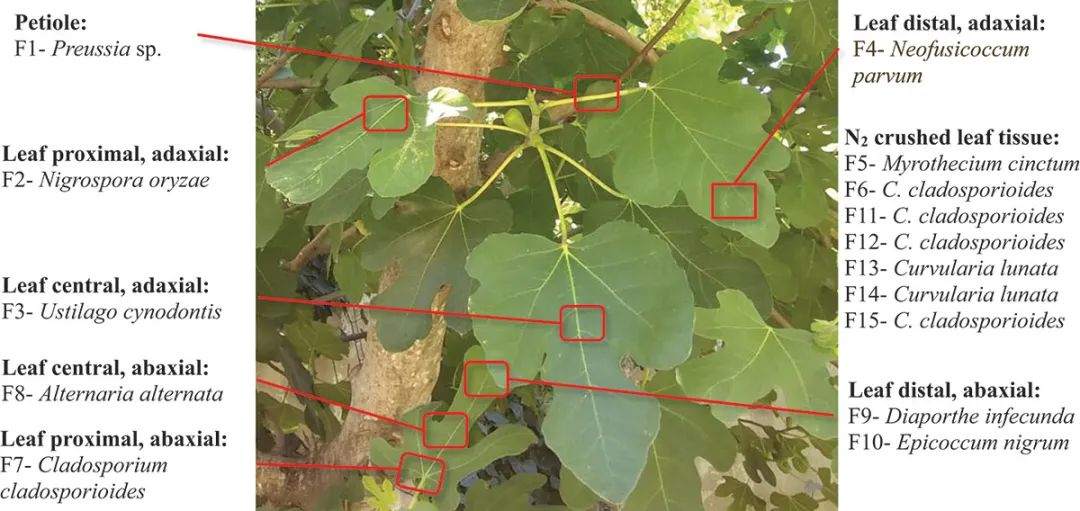博文
Mycology 2023年2期出版
|

Mycology · Volume 14 · Issue 2
欢迎浏览 · 欢迎引用 · 欢迎投稿
01
综 述
Tools and basic procedures of gene manipulation in nematode-trapping fungi
Shunxian Wang & Xingzhong Liu
Mycology | 捕食线虫真菌的遗传操作方法与手册

摘要
Nematode-trapping fungi (NTF) are the majority of carnivorous microbes to capture nematodes through diverse and sophisticated trapping organs derived from hyphae. They can adopt carnivorous lifestyles in addition to saprophytism to obtain extra-nutrition from nematodes. As a special group of fungi, the NTF are not only excellent model organism for studying lifestyle transition of fungi but also natural resources of exploring biological control of nematodes. However, the carnivorous mechanism of NTF remains poorly understood. Nowadays, the omics studies of NTF have provided numerous genes and pathways that are associated with the phenotypes of carnivorous traits, which need molecular tools to verify. Here, we review the development and progress of gene manipulation tools in NTF, including methodology and strategy of transformation, random gene mutagenesis methods and target gene mutagenesis methods. The principle and practical approach for each method was summarized and discussed, and the basic operational flow for each tool was described. This paper offers a clear reference and instruction for researchers who work on NTF as well as other group of fungi.

https://www.tandfonline.com/doi/full/10.1080/21501203.2023.2165186
Please cite this article as
Shunxian Wang & Xingzhong Liu (2023) Tools and basic procedures of gene manipulation in nematode-trapping fungi, Mycology, 14:2, 75-90, DOI: 10.1080/21501203.2023.2165186
02
研究论文
Screening for cellulases and preliminary optimisation of glucose tolerant β-glucosidase production and characterisation
Nivisti Singh, Bruce Sithole & Roshini Govinden
Mycology | 寻找新的微生物纤维素酶并优化β-葡萄糖苷酶的葡萄糖耐受性

摘要
The search for a novel microbial producer of cellulases including a glucose tolerant β-glucosidase is a challenge as most are inhibited by their product glucose. This study aims to screen for cellulolytic fungi using qualitative and quantitative screening methods. Primary screening revealed 34 of 46 fungal isolates with β-glucosidase activity. Eleven and 13 of these also displayed endoglucanase and exoglucanase activities, respectively. During secondary screening, this number was reduced to 26 β-glucosidase producers with 13 also having endoglucanase and exoglucanase activities. Isolate C1 displayed enhanced production of β-glucosidases in the presence of 0.05 M glucose (69% higher activity). Optimisation of growth conditions for β-glucosidase production by one variable at a time experiments improved production for (isolates) PS1 (64%), MB5 (84%), and C2 (69%). Isolate PS1 identified as Chaetomella sp. BBA70074 displayed the highest tolerance to glucose, retaining 10% of β-glucosidase activity in the presence of 0.8 M glucose. Tolerance to glucose increased to 14% when produced under optimal conditions. β-Glucosidase had a molecular weight of 170 kDa with a pH and temperature optima of 6 and 70°C, respectively. Future studies will include optimisation of the production of the glucose tolerant enzyme by Chaetomella sp. BBA70074.

https://www.tandfonline.com/doi/full/10.1080/21501203.2022.2155261
Please cite this article as
Nivisti Singh, Bruce Sithole & Roshini Govinden (2023) Screening for cellulases and preliminary optimisation of glucose tolerant β-glucosidase production and characterisation, Mycology, 14:2, 91-107, DOI: 10.1080/21501203.2022.2155261
03
研究论文
Antimicrobial properties and biotransforming ability of fungal endophytes from Ficus carica L. (Moraceae)
Melisa Isabel Barolo, María Victoria Castelli, & Silvia Noelí López

摘要
The endophytic fungal community associated with leaves of Ficus carica L. (Moraceae) from Argentina was investigated. Fifteen fungal isolates were isolated and identified by molecular methods into the genera Alternaria, Cladosporium, Curvularia, Diaporthe, Epicoccum, Myrothecium, Neofusicoccum, Nigrospora, Preussia and Ustilago. Cladosporium cladosporioides and Curvularia lunata were the most frequently isolated species. The fungal metabolic profiles were obtained by automated TLC and NMR and analysed by PC Analysis. Antifungal and antibacterial activity was assessed by bioautographic assays. In addition, the biotransforming ability of the fungal isolates was tested on F. carica extracts. Five isolates (33.3%) exhibited inhibitory activity against at least one of the microorganisms tested. Most of the fungal endophytes were able to metabolise the flavonoid rutin 1, and the coumarin psoralen 3 present in F. carica extracts. Further investigations of the psoralen biotransforming ability performed by the selected endophyte Alternaria alternata F8 showed the accumulation of the 6,7-furan-hydrocoumaric acid derivative 4 as the main biotransformation product. Our results corroborate that F. carica can live symbiotically with rich and diverse endophytic communities adding insights about their ecological interactions.

https://www.tandfonline.com/doi/full/10.1080/21501203.2023.2175500
Please cite this article as
Melisa Isabel Barolo, María Victoria Castelli & Silvia Noelí López (2023) Antimicrobial properties and biotransforming ability of fungal endophytes from Ficus carica L. (Moraceae), Mycology, 14:2, 108-132, DOI: 10.1080/21501203.2023.2175500
04
研究论文
Hericium ophelieae sp. nov., a novel species of Hericium (Basidiomycota: Russulales, Hericiaceae) from the Southern Afrotemperate forests of South Africa
B. Van der Merwe, P. Herrmann & Karin Jacobs

摘要
A novel species of Hericium was recently collected in the Afrotemperate forests (Knysna – Amatole region) of Southern Africa. The novel species shares many similar, dentate features common to other species in Hericium, and its basidiome first appears stark white and yellows with age. However, the substrate choice and gloeocystidia and basidiospore sizes of the specimens collected were distinct from other Hericium species. This was confirmed by sequencing the ITS and 28S genetic markers, respectively. The novel species is described as Hericium ophelieae sp. nov. and appears unique as it grows on hardwoods indigenous to Southern Africa. The species has larger basidiospores and wider gloeocystidia compared to its closest relative. H. ophelieae sp. nov. is the first endemic species of the medicinal mushroom genus Hericium to be described from Southern Africa, and the second to be described from Africa, after its closest relative, H. bembedjaense, which was isolated in Cameroon. Although this is the first Hericium to be described from the Southern African region, there are likely others to be discovered, and this study highlights the need for further research into the fungal diversity of Afrotemperate environments.

https://www.tandfonline.com/doi/full/10.1080/21501203.2023.2191636
Please cite this article as
B. Van der Merwe, P. Herrmann & Karin Jacobs (2023) Hericium ophelieae sp. nov., a novel species of Hericium (Basidiomycota: Russulales, Hericiaceae) from the Southern Afrotemperate forests of South Africa, Mycology, 14:2, 133-141, DOI: 10.1080/21501203.2023.2191636
05
研究论文
Burden of fungal infections in Kenya
Stanley N. Ratemo & David W Denning
摘要
The burden of fungal infections has been on the rise globally and remains a significant public health concern in Kenya. We estimated the incidence and prevalence of fungal infections using all mycology publications in Kenya up to January 2023, and from neighbouring countries where data lacked. We used deterministic modelling using populations at risk to calculate the disease burden. The total burden of serious fungal infections is estimated to affect 6,328,294 persons which translates to 11.57% of the Kenyan population. Those suffering from chronic infections such as chronic pulmonary aspergillosis are estimated to be 100,570 people (0.2% of the population) and probably nearly 200,000 with fungal asthma, all treatable with oral antifungal therapy. Serious acute fungal infections secondary to HIV (cryptococcal meningitis, disseminated histoplasmosis, pneumocystis pneumonia, and mucosal candidiasis) affect 196,543 adults and children (0.4% of the total population), while cancer-related invasive fungal infection cases probably exceed 2,299 and those in intensive care about 1,230 incident cases, including Candida auris bloodstream infection. The burden of fungal infections in Kenya is high; however, limited diagnostic test availability, low clinician awareness and inadequate laboratory capacity constrain the country’s health system in responding to the syndemic of fungal disease in Kenya.

https://www.tandfonline.com/doi/full/10.1080/21501203.2023.2204112
Please cite this article as
Stanley N. Ratemo & David W Denning (2023) Burden of fungal infections in Kenya, Mycology, 14:2, 142-154, DOI: 10.1080/21501203.2023.2204112
https://m.sciencenet.cn/blog-576297-1390143.html
上一篇:科微学术 | Science Advances: 新发现的古菌 “基因转移平台”
下一篇:专刊征稿 | 真菌生物修复和生物质转化